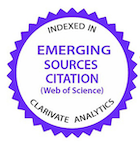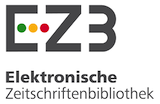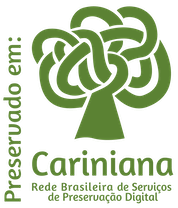Padrões temporais e espaciais na detecção de resíduos de medicamentos veterinários em aves e suínos no Brasil.
DOI:
https://doi.org/10.1590/1809-6891v23e-71763EResumo
A Segurança Alimentar é um tema importante para a saúde pública e o comércio internacional de alimentos. Resíduos de medicamentos veterinários e contaminantes ambientais em produtos de origem animal podem causar doenças e toxicidade aguda em organismos expostos a essas substâncias. Este estudo avaliou dados oficiais de monitoramento de resíduos de medicamentos veterinários do Ministério da Agricultura, Pecuária e Abastecimento em tecidos de aves e suínos no período de 2002 a 2014 para verificar padrões ocultos na ocorrência de seis medicamentos comuns (Closantel, Diclazuril, Nicarbazina, Sulfaquinoxalina, Doxiciclina e Sulfametazina). A análise dos dados foi realizada por meio de dois métodos de aprendizado de máquina: árvore de decisão e redes neurais, além da avaliação visual por meio de gráficos e mapas. As taxas de contaminação foram baixas, variando de 0 a 0,66%. Foi identificado um padrão de distribuição espacial das detecções de substâncias por região, mas nenhum padrão de distribuição temporal foi observado. No entanto, as regressões mostraram um aumento nos níveis quando essas substâncias foram detectadas, portanto, o monitoramento deve continuar. No entanto, os resultados mostram que os produtos monitorados durante o período do estudo apresentaram baixo risco à saúde pública.
Palavras-chave: Aprendizagem de máquina; saúde pública; segurança alimentar; resíduos
Downloads
Referências
FAO. Crops and livestock products [Internet] 2019. [cited 2021 Sep 24]. Available from: https://www.fao.org/faostat/en/#data.
ABPA. Relatório Anual 2021 [Internet] 2021. [cited 2021 Nov 19]. Available from: https://abpa-br.org/mercados/#relatorios. Portuguese.
WHO. Food safety [Internet] 2020. [cited 2022 Apr 29]. Available from: https://www.who.int/news-room/fact-sheets/detail/food-safety.
Kehinde OG, Junaidu K, Mohammed M, AbdulRahman AM. Detection of antimicrobial drug residues in commercial eggs using Premi® Test. International Journal of Poultry Science. 2012; 11: 50-54. https://doi.org/10.3923/ijps.2012.50.54
Ture M, Fentie T, Regassa B. Veterinary Drug Residue: The Risk, Public Health Significance and its Management. Journal of Dairy & Veterinary Sciences. 2019; 13(2): 555856. https://doi.org/10.19080/JDVS.2019.13.555856
Wang J, Yang C, Diao H. Determinants of breeding farmers' safe use of veterinary drugs: a theoretical and empirical analysis. International Journal of Environmental Research and Public Health. 2018; 15(10):2185. https://doi.org/10.3390/ijerph15102185
Miranda RC, Schaffner DW. Virus risk in the food supply chain. Current Opinion in Food Science. 2019; 30:43-48. https://doi.org/10.1016/j.cofs.2018.12.002
Abebe E, Gugsa G, Ahmed M. Review on major Food-Borne zoonotic bacterial pathogens. Journal of Tropical Medicine. 2020; 2020: 4674235. https://doi.org/10.1155/2020/4674235
Painter JA, Hoekstra RM, Ayers T, Tauxe RV, Braden CR, Angulo FJ, Griffin P.M. Attribution of foodborne illnesses, hospitalisations, and deaths to food commodities by using outbreak data, United States, 1998-2008. Emerging Infectious Diseases. 2013; 19: 407-415. https://doi.org/10.3201/eid1903.111866
Dervilly-Pinel G, Guérin T, Minvielle B, Travel A, Normand J, Bourin M, Engel E. Micropollutants and chemical residues in organic and conventional meat. Food Chemistry. 2017; 232: 218-228. http://doi.org/10.1016/j.foodchem.2017.04.013
Guéguen L, Pascal G. An update on the nutritional and health value of organic foods. Cahiers de Nutrition et de Diététique. 2010; 45: 130-143.
Cariou R, Venisseau A, Amand G, Marchand P, Marcon M, Huneau A, Le Bouquin S. Codex Alimentarius, 2007. CAC/GL 62. Working principles for Risk Analysis for Food Safety for application by governments [Internet] 2007. [cited 2020 Jan 24]. Available from: http://www.fao.org/fao-who-codexalimentarius/standards/list-ofstandards/en/?provide=standards&orderField=fullReference&sort=asc&num1=CAC/GL>.
Hummes AP, Bortoluzzi EC, Tonini V, Silva LP, Petry C. Transfer of copper and zinc from soil to grapevine-derived products in young and centenarian vineyards. Water Air Soil Pollut, 2019; 230:150 https://doi.org/10.1007/s11270-019-4198-6
Filazi A, Yurdakok-Dikmen B, Kuzukiran O, Sireli UT. Chemical contaminants in poultry meat and products [Internet] 2017. [cited 2021 Jun 10]. Available from: https://www.intechopen.com/books/poultry-science/chemical-contaminants-in-poultry-meat-and-products. http://doi.org/10.5772/64893
Van Loo EJ, Alali W, Ricke SC. Food safety and organic meats. Annual Review of Food Science and Technology. 2012; 3: 203-225. https://doi.org/10.1146/annurev-food-022811-101158
Brasil. Agência Nacional de Vigilância Sanitária. Instrução Normativa n° 51, de 19 de dezembro de 2019. Estabelece a lista de limites máximos de resíduos (LMR), ingestão diária aceitável (IDA) e dose de referência aguda (DRfA) para insumos farmacêuticos ativos (IFA) de medicamentos veterinários em alimentos de origem animal [Internet] 2019. [cited 2022 Apr 28]. Available from: https://www.in.gov.br/en/web/dou/-/instrucao-normativa-n-51-de-19-de-dezembro-de-2019-235414514. Portuguese.
Doyle MP, Erickson MC. Opportunities for mitigating pathogen contamination during on-farm food production. International Journal of Food Microbiology. 2012; 152: 54-74. http://doi.org/10.1016/j.ijfoodmicro.2011.02.037
Liakos KG, Busato P, Moshou D, Pearson S, Bochtis D. Machine Learning in Agriculture: A Review. Sensors. 2018; 18: 2674. https://doi.org/10.3390/s1808267419
Brasil. Ministério da Agricultura Pecuária e Abastecimento. Instrução Normativa n° 42, de 20 de dezembro de 1999. Altera o Plano Nacional de Controle de Resíduos em produtos de origem animal – NCPR e os Programas de Controle de Resíduos em Carne – PCR, Mel – PCRM, Leite – PCRL e Pescado – PCRP e dá outras providências [Internet] 1999b. [cited 2021 Jul 10]. Available from: https://www.gov.br/agricultura/pt-br/assuntos/inspecao/produtos-animal/plano-de-nacional-de-controle-de-residuos-e-contaminantes/documentos-da-pncrc/instrucao-normativa-sda-n-o-42-de-20-de-dezembro-de-1999.pdf/view. Portuguese.
Bittencourt MS, Martins MT, Albuquerque FGS, Barreto F, Hoff R. High-throughput multiclass screening method for antibiotic residue analysis in meat using liquid chromatography-tandem mass spectrometry: a novel minimum sample preparation procedure. Food Additives & Contaminants: Part A. 2012; 29(4): 508-516. http://doi.org/10.1080/19440049.2011.606228
Almeida MP, Rezende CP, Souza LF, Brito RB. Validation of a quantitative and confirmatory method for residue analysis of aminoglycoside antibiotics in poultry, bovine, equine and swine kidney through liquid chromatography-tandem mass spectrometry. Food Additives & Contaminants: Part A. 2012, 29(4): 517-525. http://doi.org/10.1080/19440049.2011.623681
Brasil. Ministério da Agricultura Pecuária e Abastecimento. Guia de validação e controle da qualidade analítica: fármacos em produtos para alimentação animal e medicamentos veterinários [Internet] 2011. [cited 2022 Apr 29]. Available from: http://www.agri cultura.gov.br/assuntos/laboratorios/arquivos-publicacoes-laboratorio/guia-de-validacao-controle-de-qualidade-analitica.pdf. Portuguese.
Kohonen T. Self-organized formation of topologically correct feature maps. Biological Cybernetics. 1982; 43, 59-69. https://doi.org/10.1007/BF00337288
Shah-Hosseini H, Safabakhsh R. TASOM: a new time adaptive self-organizing map. IEEE Transactions on Systems, Man, and Cybernetics - Part B. 2003;33:271-82. https://doi.org/10.1109/TSMCB.2003.810442
Hermuche PM, Silva NC, Giuimarães RF, Carvalho Jr OA, Gomes RAT, Paiva SR, McManus CM. Dynamics of sheep production in Brazil using principal components and auto-organization features maps. Revista Brasileira de Cartografia. 2012; 64, 821-832.
IBGE. Redes Geodésicas [Internet] 2014. [cited 2020 Feb 14]. Available from:. Available from: https://www.ibge.gov.br/geociencias/informacoes-sobre-posicionamento-geodesico/rede-geodesica.html. Portuguese.
Salzberg SL. Book Review: C4.5: Programs for Machine Learning by J. Ross Quinlan. Morgan Kaufmann Publishers, Inc., 1993. Machine Learning. 1994; 16: 235-240. https://doi.org/10.1023/A:1022645310020
Stiglic G, Kocbek S, Pernek I, Kokol P. Comprehensive decision tree models in bioinformatics. Plos One. 2012; 7:1-14. https://doi.org/10.1371/journal.pone.0033812
Mohri M, Rostamizadeh A, Talwalkar A. Foundations of Machine Learning. 2nd ed. Cambridge: MIT Press; 2018. 427p.
He H, Chen S, Li K, Xu X. Incremental Learning From Stream Data. IEEE Transactions on Neural Networks. 2011; 22: 1901-1914. https://doi.org/10.1109/TNN.2011.2171713
Read J, Bifet A, Pfahringer B, Holmes G. Batch-Incremental versus Instance-Incremental Learning in Dynamic and Evolving Data. In: Hollmén J, Klawonn F, Tucker A. Advances in Intelligent Data Analysis XI. Berlin: Springer; 2012. pp. 313-323. https://doi.org/10.1007/978-3-642-34156-4_29
Mund MD, Khan UH, Tahir U, Mustafa B-E, Fayyaz A. Antimicrobial drug residues in poultry products and implications on public health: A review, International Journal of Food Properties. 2017; 20: 1433-1446. https://doi.org/10.1080/10942912.2016.1212874
Gouvêa R, Santos FF, Aquino MHC, Pereira VLA. Fluoroquinolones in industrial poultry production, bacterial resistance and food residues:a review. Brazilian Journal of Poultry Science. 2015; 17: 1-10. https://doi.org/10.1590/1516-635x17011-10
Cordle MK. USDA regulation of residues in meat and poultry products. Journal of Animal Science. 1988; 66, 413-433. https://doi.org/10.2527/jas1988.662413x
Zhu X, Wu X. Class Noise vs. Attribute Noise: A Quantitative Study. Artificial Intelligence Review. 2004; 22: 177-210. https://doi.org/10.1007/s10462-004-0751-8
Shepperd M, Cartwright M. Predicting with sparse data. IEEE Transactions on Software Engineering. 2001; 27: 987-998. https://doi.org/10.1109/32.965339
Downloads
Publicado
Como Citar
Edição
Seção
Licença
Copyright (c) 2022 Ciência Animal Brasileira / Brazilian Animal Science

Este trabalho está licenciado sob uma licença Creative Commons Attribution 4.0 International License.
Autores que publicam nesta revista concordam com os seguintes termos:
- Autores mantém os direitos autorais e concedem à revista o direito de primeira publicação, com o trabalho simultaneamente licenciado sob a Licença Creative Commons Attribution que permite o compartilhamento do trabalho com reconhecimento da autoria e publicação inicial nesta revista.
- Autores têm autorização para assumir contratos adicionais separadamente, para distribuição não-exclusiva da versão do trabalho publicada nesta revista (ex.: publicar em repositório institucional ou como capítulo de livro), com reconhecimento de autoria e publicação inicial nesta revista.
- Autores têm permissão e são estimulados a publicar e distribuir seu trabalho online (ex.: em repositórios institucionais ou na sua página pessoal) a qualquer ponto antes ou durante o processo editorial, já que isso pode gerar alterações produtivas, bem como aumentar o impacto e a citação do trabalho publicado (Veja O Efeito do Acesso Livre).






























